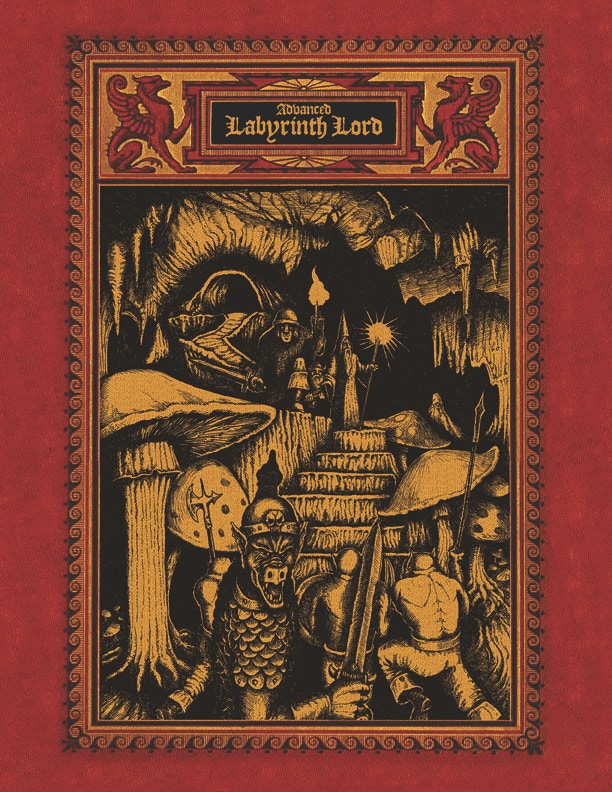Alternative Experience Awards and Advancement
(I started thinking about this as a way to make XP awards in 5e come from all three “Pillars of Adventure” rather than just combat, but the system might work well in old-school games too.)
From a game design perspective, how do I want character advancement to work?
- With good play, characters should gain a level every 3–4 sessions — maybe faster at low levels and slower at mid or high levels.
- The less bookkeeping the better.
- Players should know up front what things earn rewards. Those things should match what the players and referee find fun.
- Realism or balance are secondary to fun.
- Conform to existing book rules as much as possible, keeping house rules mostly on the referee’s side of the screen.
First, make a list of character actions to reward. Here’s my list:
- kill, capture, or route all the monsters in a challenging combat
- get a treasure (without killing a monster guarding it)
- talk to a monster they haven’t met before without fighting it
- exchange important information or aid with an NPC
- discover a new dungeon level, wilderness lair, or hidden area
- overcome an environmental obstacle (bridge a chasm, disarm a trap, navigate a trick maze)
- engage with a new Weird thing (“What’s up with the glowing water in this pool? Let’s drink some!”)
Second, tell the players. Solicit their feedback. Agree on which activities will earn experience. Does the list include at least a few things each player finds fun?
Third, decide how quickly to advance characters. How many instances of the rewarded actions does the party need to rack up before the characters gain a level? My players probably do 6–8 of those things each session, so I’ll set the advancement target at twenty. Most of the characters will gain a level every three-ish sessions (3 × 7 = 21).
Can we do this with minimal bookkeeping and without breaking player-facing by-the-book XP? Yes, with some one-time prep.
After averaging the XP requirements for the core classes from Labyrinth Lord and Swords & Wizardry, I divided those per-level XP requirements by our “twenty things”. The result is the chunk of experience points to award for each desirable thing the characters do. At the end of a session, tally the number of fun things, multiply by the “XP award packet size”, and have each player add that to their character’s XP total. The players continue to use the advancement table from the book for their character class.
| Level | Avg. XP | To Next Lvl | Size of XP Awards (20 as divisor) |
|---|---|---|---|
| 1 | 0 | 1824 | 91 |
| 2 | 1824 | 1824 | 91 |
| 3 | 3648 | 3649 | 182 |
| 4 | 7297 | 7300 | 365 |
| 5 | 14594 | 13969 | 698 |
| 6 | 28563 | 26062 | 1303 |
| 7 | 54625 | 48250 | 2412 |
| 8 | 102875 | 87875 | 4393 |
| 9 | 190750 | 98000 | 4900 |
| 10 | 288750 | 110000 | 5500 |
| 11 | 398750 | 111250 | 5562 |
| 12 | 510000 | 111250 | 5562 |
| 13 | 621250 | 111250 | 5562 |
| 14 | 732500 | 111250 | 5562 |
| 15 | 843750 | 111250 | 5562 |
| 16 | 955000 | 111250 | 5562 |
| 17 | 1066250 | 111250 | 5562 |
| 18 | 1177500 | 111250 | 5562 |
| 19 | 1288750 | 111250 | 5562 |
| 20 | 1400000 | 111250 | 5562 |
So, for example, if a party of first-level characters wins four combats, finds and unguarded treasure, and negotiates an alliance with bandits, that’s six fun things in the session. 6 × 91 = 546 XP awarded to each character.
To monkey with the speed of advancement, tweak the number-of-things divisor by level to change the size of each XP award chunk. For example, to get quick early advancement, then progressively slower advancement:
| Level | To Next Lvl | Divisor | Size of XP Award |
|---|---|---|---|
| 1 | 1824 | 12 | 152 |
| 2 | 1824 | 12 | 152 |
| 3 | 3649 | 12 | 304 |
| 4 | 7300 | 24 | 304 |
| 5 | 13969 | 24 | 582 |
| 6 | 26062 | 24 | 1085 |
| 7 | 48250 | 24 | 2010 |
| 8 | 87875 | 24 | 3661 |
| 9 | 98000 | 24 | 4083 |
| 10 | 110000 | 24 | 4583 |
| 11+ | 111250 | 36 | 3090 |
Does this system ignore a few things? Sure. I decided to not care about the number of player characters in the party, for one. Sharing XP with henchmen is another. I give each henchman a half-share of XP in addition to that awarded to the player characters. Charisma already puts a cap on the number of henchmen a PC can attract, and we want to encourage henchmen in our old-school games, right?



